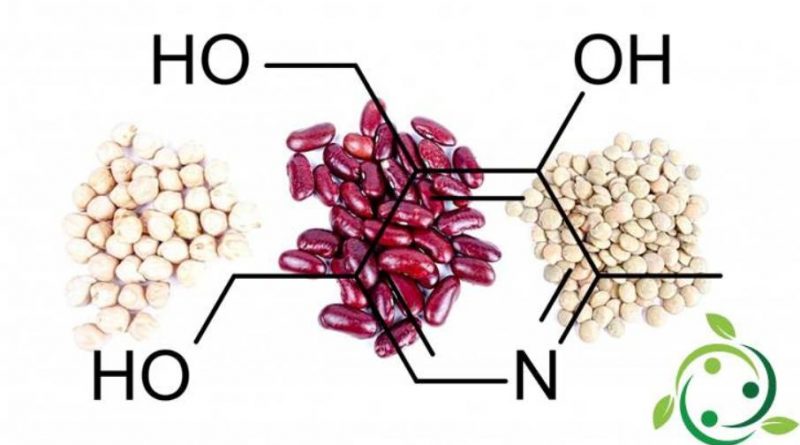Pyridoxine
Pyridoxine
Pyridoxine whose brute or molecular formula is: C8H11NO3, is a heterocyclic aromatic compound derived from pyridine. Pyridoxine is also better known as Vitamin B6, or Vitamin Y or even Pyridoxamine or Pyridoxal.
In fact, the term Vitamin B6 refers to all derivatives of 2-methyl-pyridine (2-methyl-3,5-dihydroxy-methyl-pyridine) that have the activity of pyridoxine.
Pyridoxine, once also called adermine or pyridoxol, has a methyl group in position 4 of pyridine.
The three active forms are therefore pyridoxine, pyridoxal and pyridoxamine.
Pyridoxine is a fundamental molecule for the metabolism of nitrogen compounds, influencing the synthesis of amino acids, carbohydrates, hemoglobin, proteins and lipids and for the formation of red blood cells. It also stimulates neuropsychological brain functions and represents a good antioxidant factor. A deficiency can cause anemia, apathy, dermatitis, fatigue and problems with the central nervous system.
Pyridoxine is present in some foods such as: meat, cereals, flour, legumes, fish, eggs, vegetables (cooking and / or refining does not disperse significant amounts).
Pyridoxine, especially in foods of vegetable origin, is linked to proteins or non-protein compounds (glycosides) that make it unavailable, therefore it is supplied to a greater extent by foods of animal origin.
As regards the possible deficiencies of this vitamin in humans, a true vitamin B6 deficiency disease has not been described, the symptoms of depression, nausea, vomiting, mucosal lesions, peripheral neuritis, seborrheic dermatitis, cheilosis and glossitis derive from experimentation on volunteers.
Severe hypovitaminosis is known in neonates fed with unsuitable commercial formulas, which is manifested by CNS disorders (convulsions).
Excess vitamin B6 toxicity is quite low; occurs at doses higher than 250 mg / day with symptoms of neurotoxicity (sensory peripheral neuropathy) and photosensitivity.
Pyridoxine is also used in case of isoniazid poisoning and poisoning by some types of fungi.
Warning: The information given is not medical advice and may not be accurate. The contents are for illustrative purposes only and do not replace medical advice.

